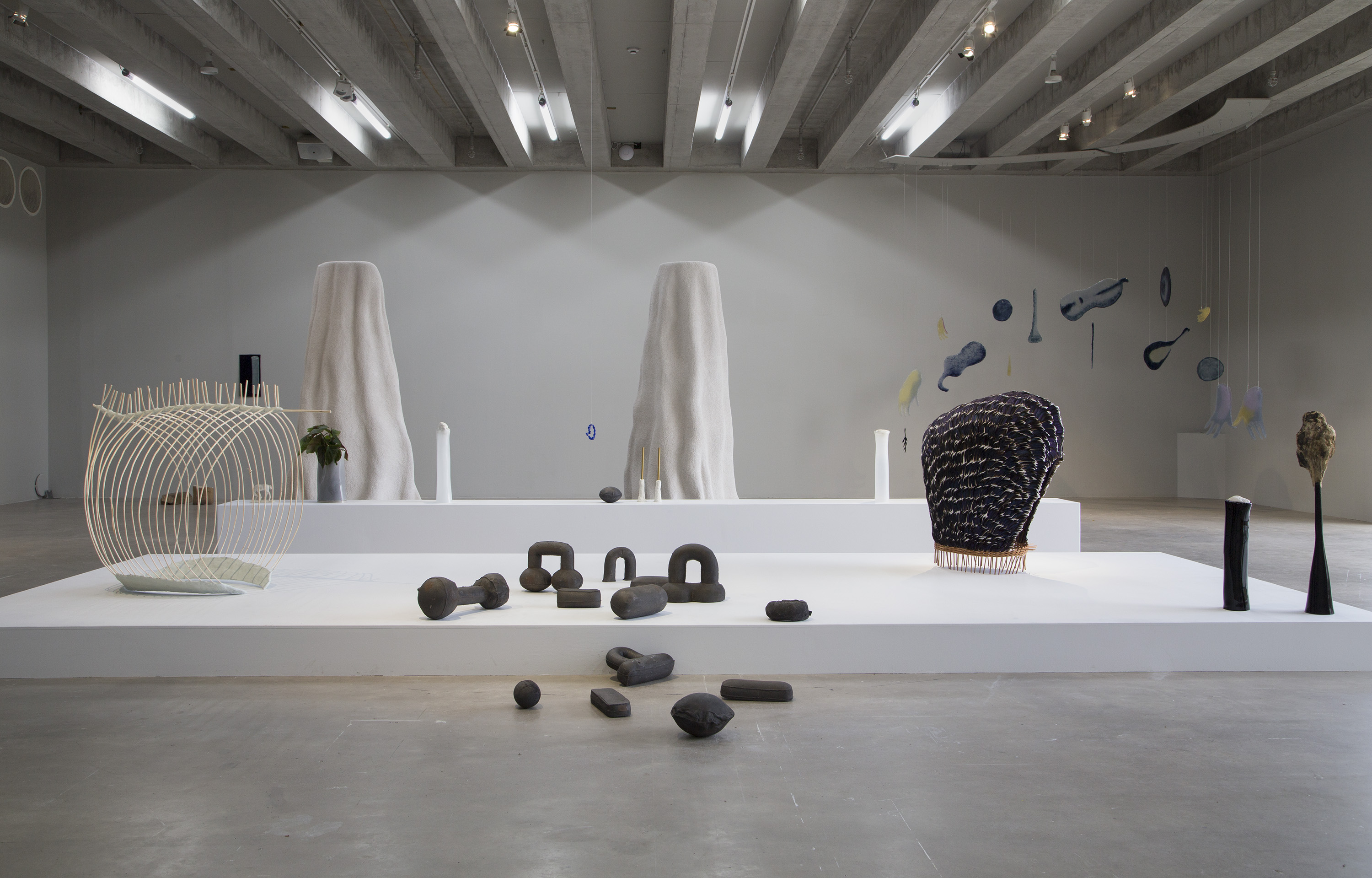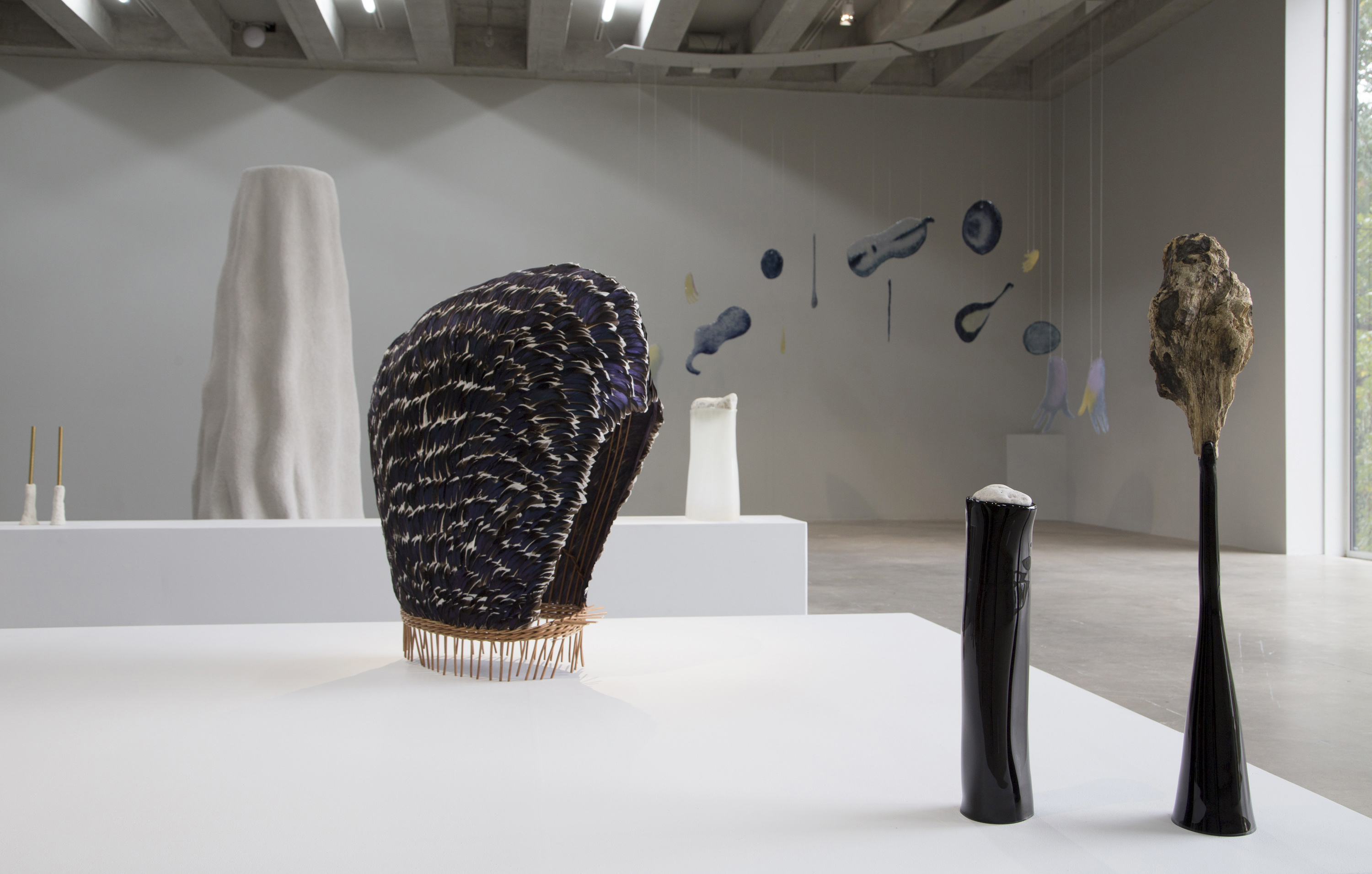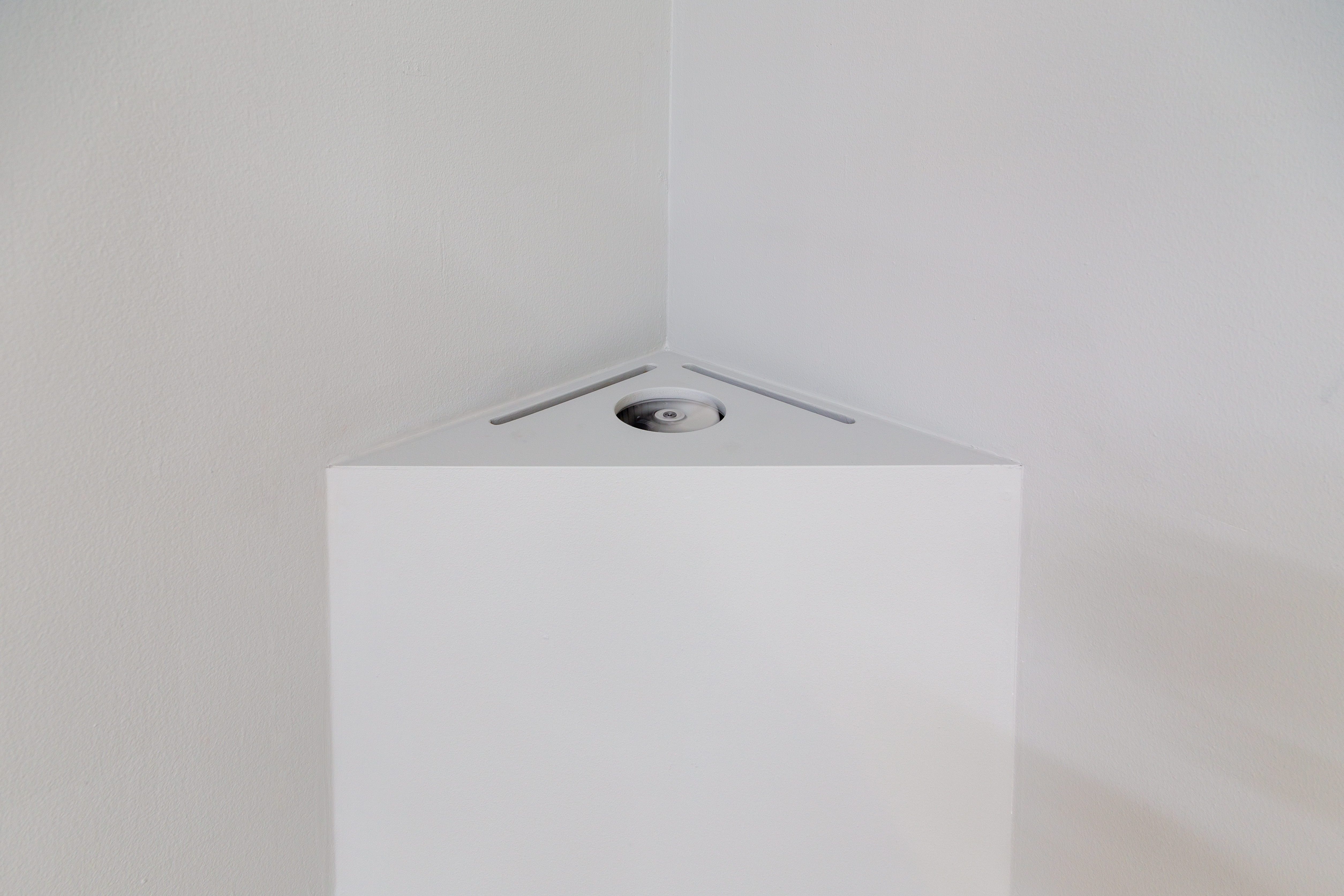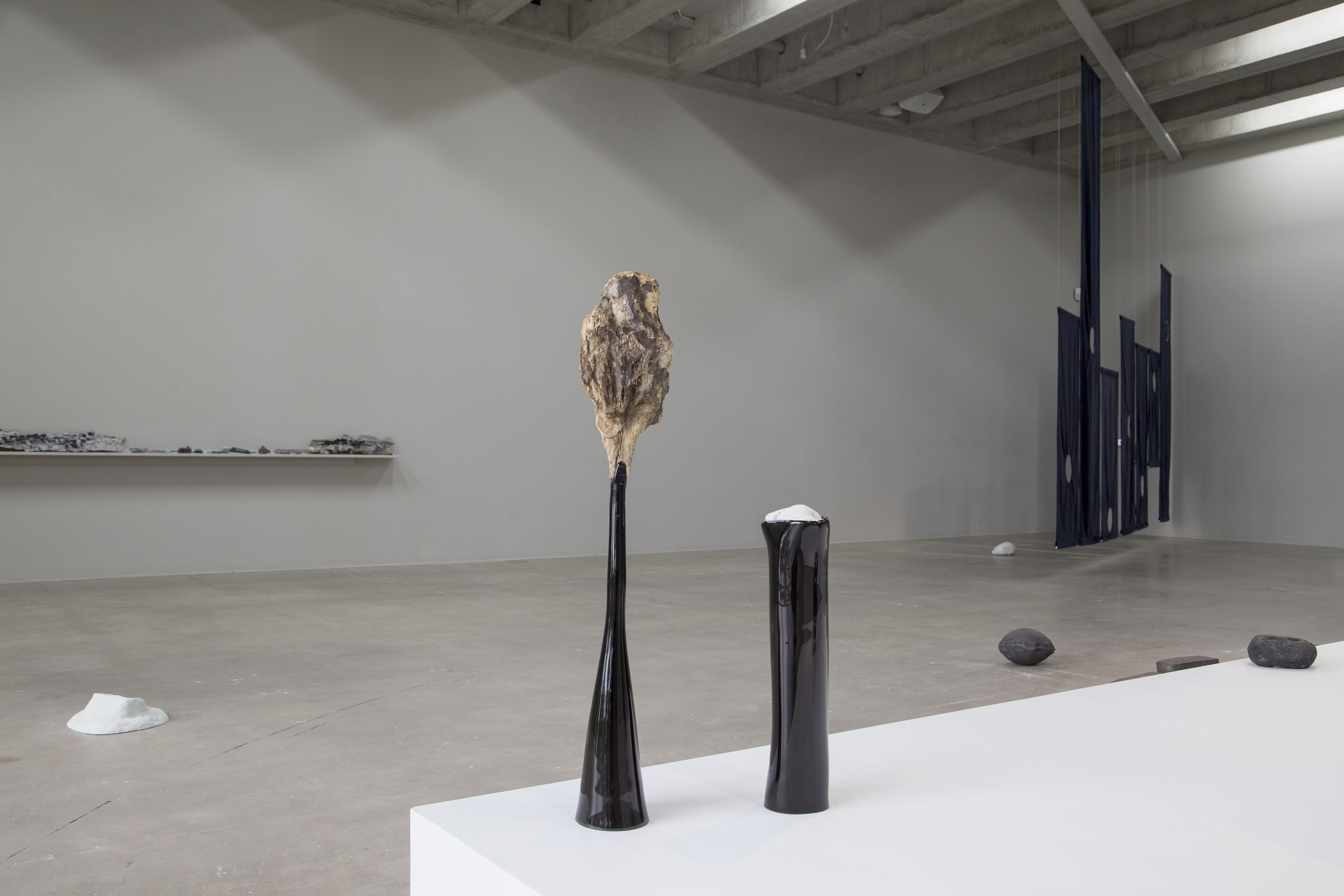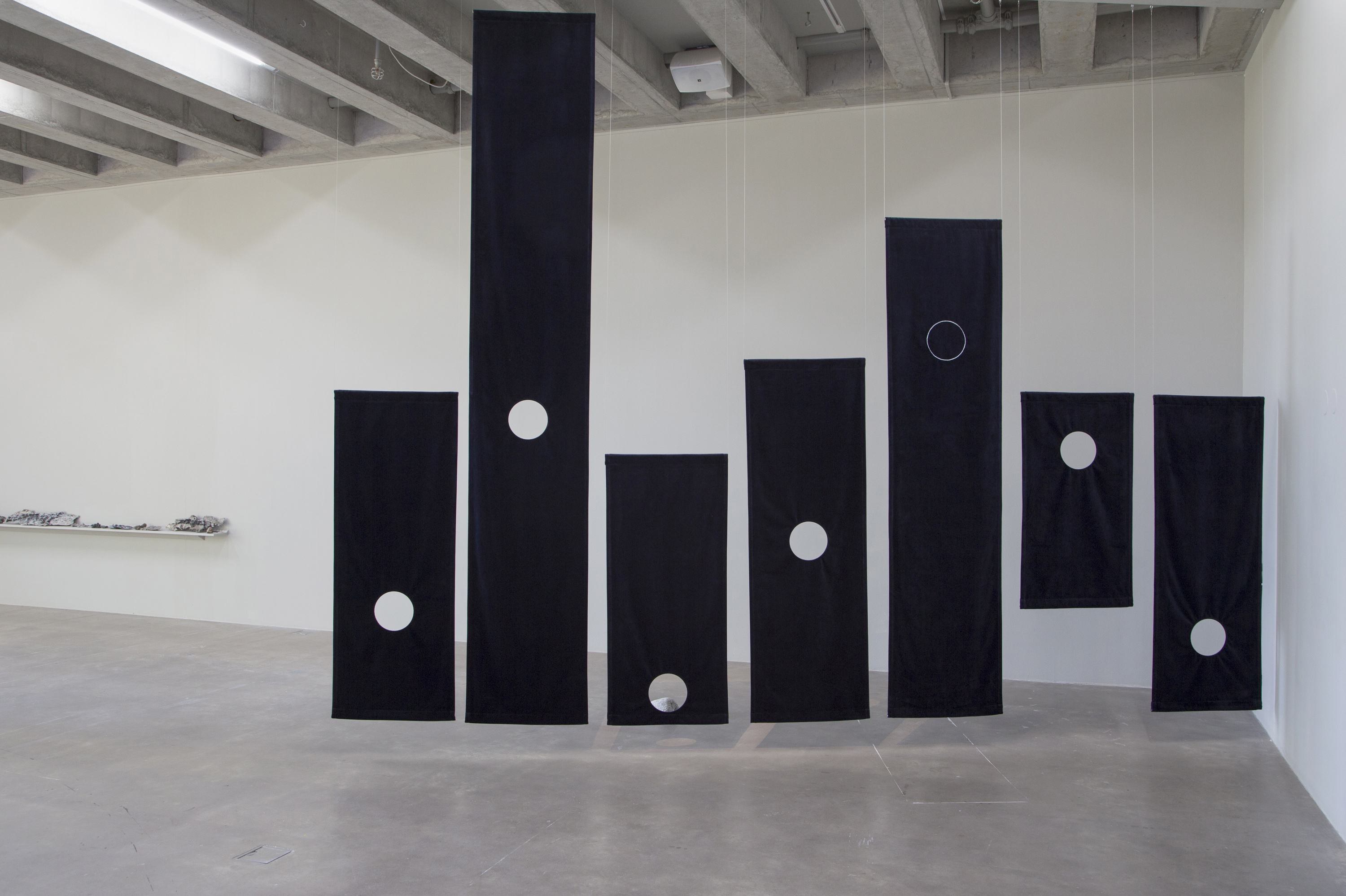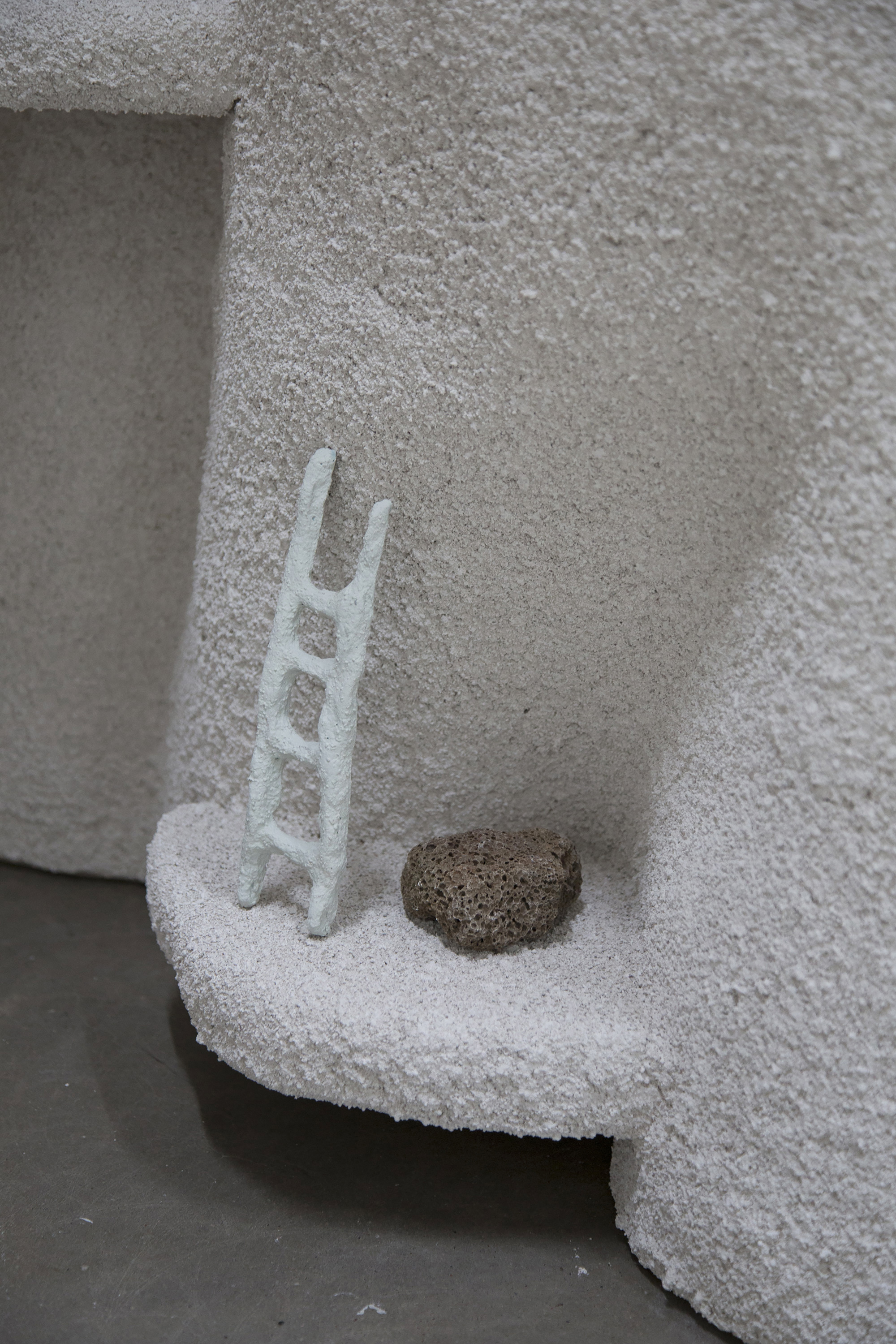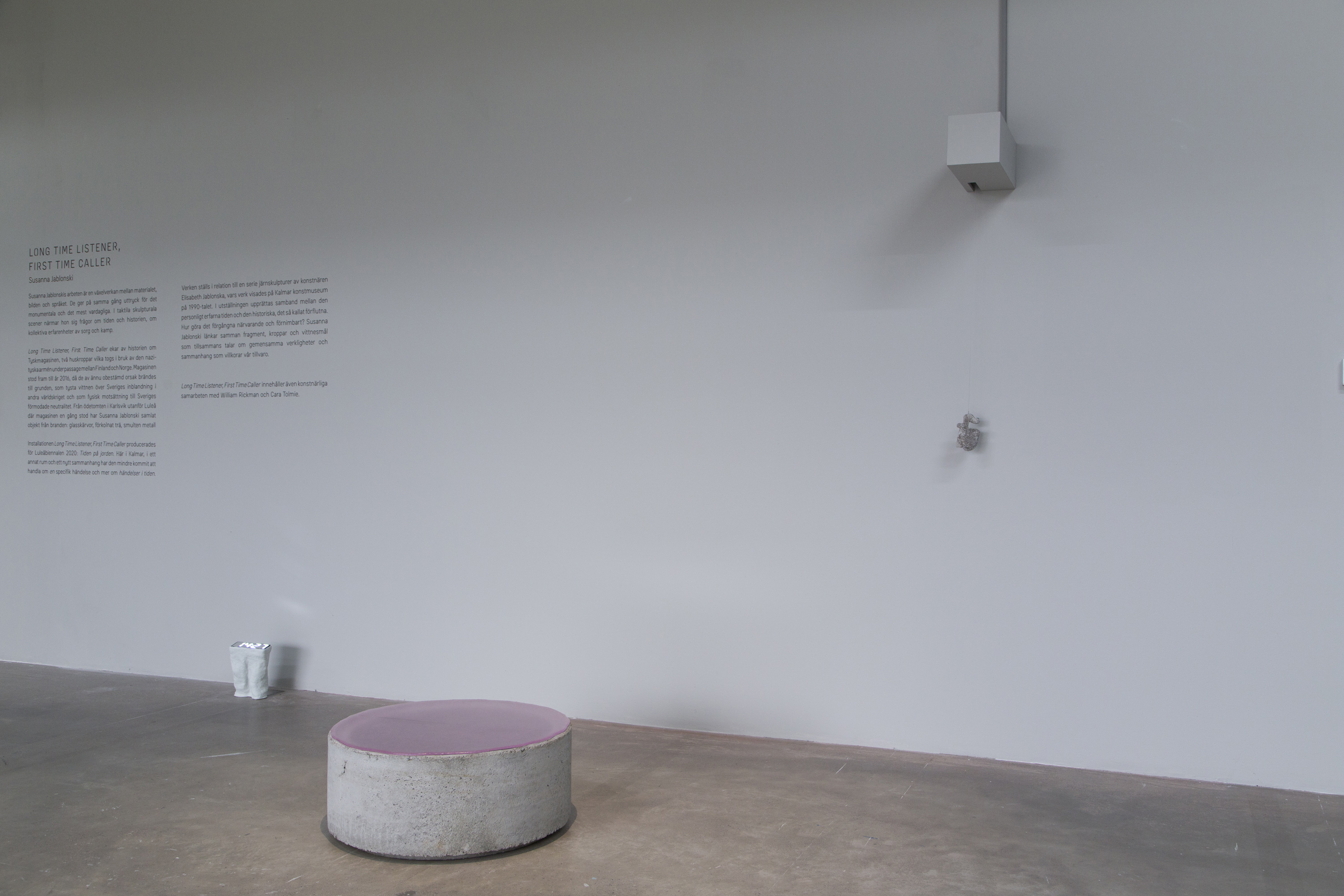Long Time Listener, First Time Caller
Kalmar Konstmuseum
13.10.2021 - 12.12.2021
Curated by: Karin Bähler Lavér
Kalmar Konstmuseum
13.10.2021 - 12.12.2021
Curated by: Karin Bähler Lavér
Susanna Jablonski works with sculpture, moving images and spatial installations. Her works, which are an interplay between material, image and language, simultaneously express the most monumental and the everyday. In tactile, sculptural scenes, she takes on questions of time and history, of collective experiences of grief and struggle. To experience Susanna Jablonski’s installations is to move and see through time, to exist in the world with heightened awareness.
The prologue for Long Time Listener, First Time Caller takes place in Karlshäll, just outside Luleå in Sweden, on a day in June 2020. The site is marked by the Second World War and Sweden’s involvement in it. The evidence is there, if we only know to look for it. If you make the journey out to Karlshäll you are met by a large, open field, scattered with what appears to be rubble but that on closer inspection reveals what has taken place there. On Midsummer’s Day 2016 two buildings that had been made available to the Nazi-German army, and therefore gone by the name “Tyskmagasinen” (the German Warehouses), were burned to the ground. There is no information about what happened. Other than that which remains. Charred wood, glass shaped by the heat, bits of scrap metal molten together and taking on new shapes. No one knows who chose to set the warehouses on fire or why. The buildings, which until the day they burned down had been allowed to bear witness to what had happen there, are now a breeze in the air, ash on the ground, a feeling of uneasiness. The buildings, which until the day they burned down had remained a physical contradiction to Sweden’s presumed neutrality during the Second World War, are now an image in the archives, a story to tell.
Susanna Jablonski approached the space like an archaeological site. Meticulously she collected, categorised and grouped the artifacts, the evidence: the wood, glass, metal. She carried them with her like one carries one’s history, into her work and her art. Letting these objects become the starting point for the installation that would later be shown at Havremagasinet (the Oats Warehouse), Norbotten’s regional arts centre in Boden, was a way of thinking about how objects and architecture are used and valued as monuments of time and historical events. Especially how those events that don’t leave tangible traces such as architecture or monuments, remain in bodies in other ways: traces, marks, threads – both material and immaterial. Havremagasinet, which houses its own military history, was through Susanna Jablonski’s installation haunted by the memory of Tyskmagasinen and at once charged with new potential. Material from the fire are now placed on hidden shelves in two sculptural bodies that give the exhibition its name – Long Time Listener, First Time Caller – as well as along one of the walls of the exhibition space, like relics in a historical museum.
”There is no place that is not haunted by many different spirits hidden there in silence, spirits one can `invoke ́ or not. Haunted places are the only ones people can live in ...” Michel de Certeau writes in Practices of Everyday Life. As the installation now moves from its original physical context and is reassembled in another room, whose walls echo with different stories, it is not just spirits of military history that are invoked, but also those who with their presence bring about a displacement of the relationships and circumstances that we take for granted. In Kalmar, the installation is less concerned with one specific event, and more with events in time. Based on the assumption that great history always stands in direct relationship to the personal, Long Time Listener, First Time Caller, speaks of possible ways of approaching reality. In the exhibition, links are established between personally experienced time and the historical. How to make the past present and perceptible? Susanna Jablonski connects fragments, bodies and testimonies that together speak of communal realities and contexts that condition our existence.
The titles of the works Shagal (2019) and Dov (2020) refer to two historical persons – one public and one very personal to Susanna Jablonski. Shagal takes its name from that which was the artist Marc Chagall’s (1887–1985) original, Jewish name. Dov was one of Susanna Jablonski’s grandfather’s Hebrew names, which was shed when he reached Sweden as a Holocaust survivor. Shagal is woven using twigs of willow and joined by paper clay along its spine; Dov carries a shimmering plumage of black and blue. Two alienated bodies that both take their shape from the thorax of a horse. They are fragile constructions that nevertheless hold history together. Or to use a description by the artist Santiago Mostyn: “Memorials that stand at the intersection of what is present and what is absent: mementos for the future.”
In the novel Austerlitz, the German writer W. G. Sebald writes: “It seems to me then as if all the moments of our life occupy the same space, as if future events already existed and were only waiting for us to find our way to them at last, just as when we have accepted an invitation we duly arrive in a certain house at a given time.”
About twenty years ago, the artist Elisabeth Jablonska, Susanna’s aunt, participated in an exhibition in the subterranean passages beneath the old building of Kalmar konstmuseum. It is as though Elisabeth already then opened a door for Susanna into the museum, as if Susanna’s presence now prolongs that of Elisabeth. Susanna Jablonski’s installation features a series of iron sculptures made by Elisabeth Jablonska in the 1990s. These forms have been transferred from documented drawings to surfaces, onwards to sewn textile objects. Objects filled and cast in iron – objects transformed. Some of these sculptures start from halos traced on medieval murals. Others come from images and items in her studio. The sacred and the profane are equalised – Jablonska and Jablonski meet in the impulse to mix and juxtapose the otherwordly with the commonplace, and that way achieve a different symbolic order. In relation to the fragile and ethereal in Jablonski’s work, Jablonska’s sculptures ground and anchor, they force us to the ground.
The mediated experience of the Holocaust is shared in their biographical kinship. What does it mean to carry heritage, in relation to creating images? Long Time Listener, First Time Caller is a long and multi- faceted conversation across generations, beyond time and place. By inviting and engaging in a spatial dialogue with those who have come before her, Susanna Jablonski seeks contact with the conditions for her own creativity.
The Orchestra, from 2020, is a glass mobile shimmering in yellow, blue and purple. The figures are borrowed from Marc Chagall’s painting Le Grand Cirque, in oil and gouache from 1956. The two-dimensional surface of the painting has been transferred to glass and allowed to take on a three-dimensional shape. Details in the painting can be interpreted as nods to religiosity. Marc Chagall continuously returned to depictions of the Vitebsk of his childhood: the daily activities, but also the fiddlers and the circus; “the sudden invasion of the wonderful in the rhythm of the everyday”. Marc Chagall’s painting is a reccurring reference for Susanna Jablonski. The dreamlike, floating figures in The Orchestra do not just conjure up Marc Chagall’s imagery but also the world of pictures that became her earliest impressions. Images that have stuck in her memory and come to take on new meanings at different stages of life.
The passing of time can be read in the glass sculptures that both carry and are shaped by fossilised coral. Other figures in paper clay contain digital clocks that give the actual time. In Long Time Listener, First Time Caller the ephemeral and the perpetual are both simultaneously present. Objects, tales and memories chronicle a being in time. We exist in the middle of events, in the middle of history. But rather than presenting 2020 a set, defined meaning, Susanna Jablonski’s installation is a space where new meaning can emerge. An invitation for us all to arrive.
- Karin Bähler Lavér
